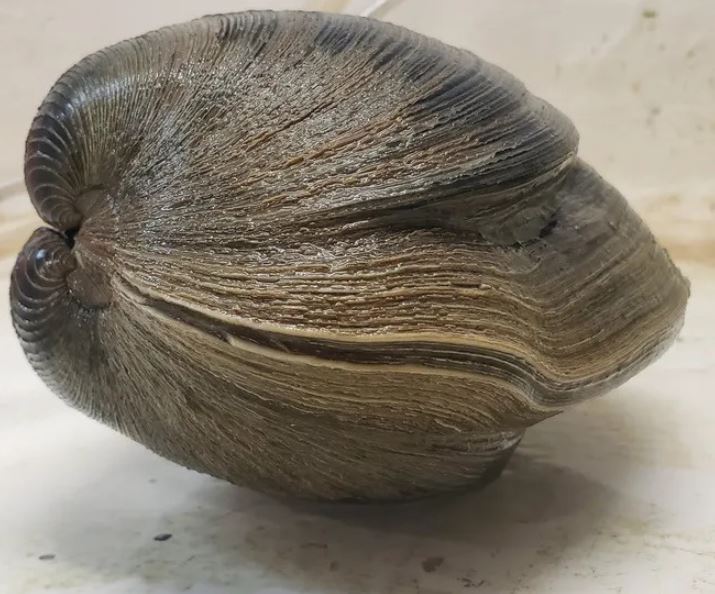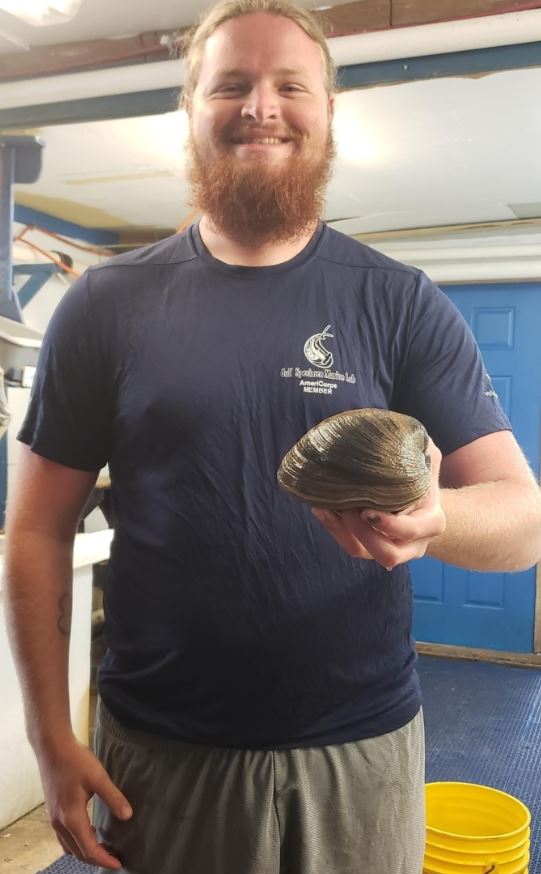A nearly 1.2 kg ocean quahog clam was found in Florida, spared from being cooked because it is 214 years old.
Recently, Blaine Parker of Florida, USA, discovered a giant clam at Alligator Point, Florida. Upon realizing the uniqueness of the clam, Parker had a change of heart about consuming it and decided against killing it.

Instead, he brought the clam to the Gulf Specimen Marine Lab in Panacea, Florida, where he serves as a specimen collector. Given its substantial size, Parker estimated that the clam could provide enough meat for two bowls of soup.
After conducting tests, the lab identified it as an Ocean Quahog, a saltwater clam that is edible and over 214 years old.

This means the clam was born around 1809, the same year as Abraham Lincoln. Hence, it was named Aber-clam Lincoln, after the 16th President of the United States.
This species is found in the coastal waters from Newfoundland to North Carolina, measuring 2.8-4.3 inches (about 7.1-10.9 cm) in length, weighing an average of 227 grams, and can live over 200 years.
They start reproducing at the age of 6 and are commonly harvested for commercial purposes around the age of 20. However, Aber-clam Lincoln is 6 inches (15.24 cm) long and weighs nearly 1.2 kg, five times the average weight of a typical ocean quahog.
The lab stated that the clam's age can be determined by counting the layers on its shell, where each layer corresponds to one year. Parker counted around 214 layers on the shell of Aber-clam Lincoln. About a week after finding Aber-clam Lincoln, Parker released it back into the Gulf of Mexico.
This is not the oldest ocean quahog clam ever found. In 2006, scientists captured a quahog clam estimated to be around 507 years old. They gave it the moniker "Ming," based on the possibility that it existed in 1499, China's Ming Dynasty.






